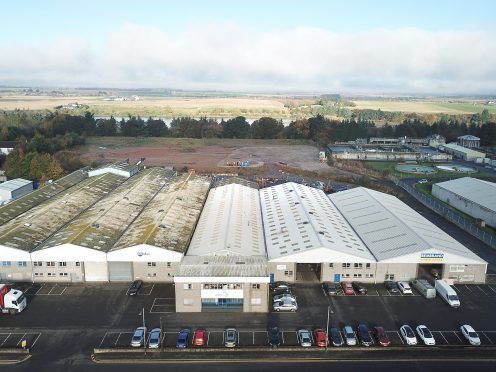An application for an Angus battery storage development has been lodged to keep the lights on in Scotland.
Applicants Capbal Limited said the proposed development at Forfar’s Orchardbank Industrial Estate “would form a critical part of Scotland’s overall power network”.
The proposed development for an energy storage system for 20 years would comprise a compound with battery storage and electricity switchrooms.
The development on land next to the Oilfield Machinery business would be fully decommissioned after 20 years and the 4740sqm site would be restored.
The energy storage system would connect into the 33V Maryton to Pitreuchie underground line which connects into the Lunanhead station.
Storage enables energy to be harvested and retained for consumption at a more convenient time, providing a buffer source for emergencies.
Power generation and usage on the UK grid have to be matched as closely as possible in real-time to keep electricity supplies at a safe frequency so household electrical appliances function properly.
A planning statement said: “The proposed development would provide a balancing service for electricity supply in Scotland. It would form a critical part of Scotland’s overall power network.
“The scheme is designed to provide real-time grid stabilisation to the local area allowing excess electricity generated from a variety of renewable and conventional sources to be stored in the batteries during times of low demand.
“This stored capacity can then be fed back into the grid during times of peak demand which can coincide with times of low generation (early mornings and evenings).”
A total of four energy storage containers would be installed with a maximum battery capacity of 10MW and construction would take approximately eight weeks.
The applicant said the site is located well away from residential occupiers and the proposed storage development would give rise to “minimal noise and associated activity”.
The National Infrastructure Commission Smart Power Report 2016 found energy storage ‘could save consumers up to £8bn a year by 2030, help the UK meet its 2050 carbon targets, and secure the UK’s energy supply for generations’.
The Department of Business, Energy and Industrial Strategy published data for 2016 showing that renewable energy sources provided 24.4% of all electricity generated across the UK.
The draft Scottish Energy Strategy was issued by Scottish ministers in January 2017 which introduced a new target that by 2030 50% of energy consumption in Scotland will be from renewable sources.
A spokesperson for the National Grid said: “The types of services we can get are vast, from providing response services in milliseconds, rather than in seconds, to moving peak demand around. If there is a surplus of energy on a bright, sunny bank holiday when there is not a lot of demand, then it is about storing that, and then reinjecting it on the Monday morning when demand picks. Those sorts of services, from a balancing perspective, including balancing of suppliers, are going to be very valuable to us.”










